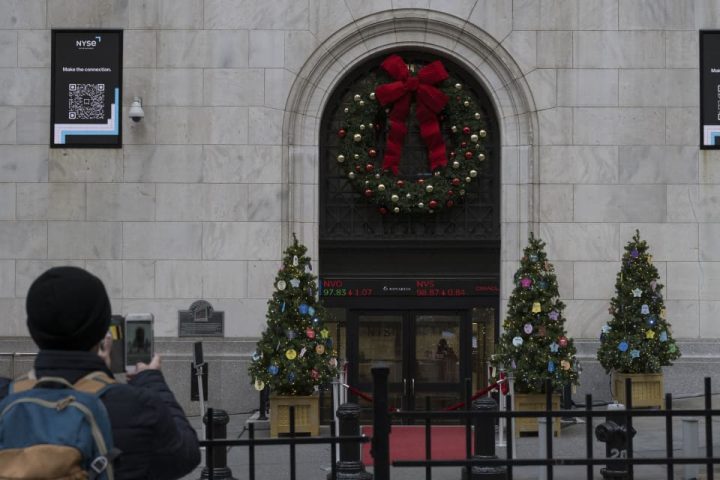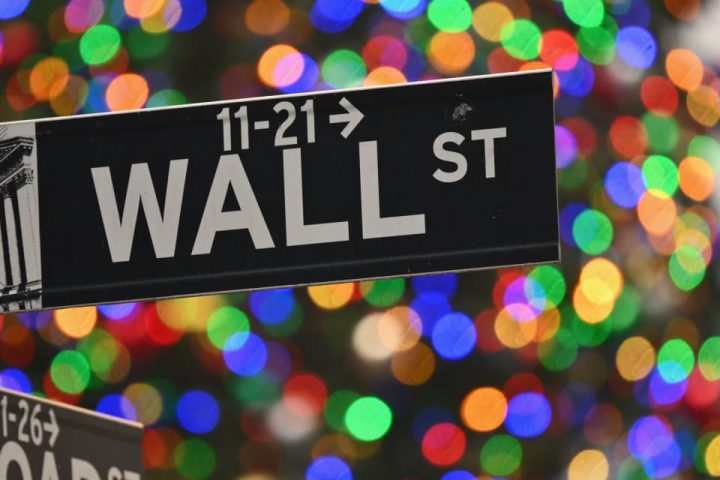Many people like to feel at least a little bit of fright.
That has been the whole point of Halloween for ages. The spooky traditions might even be a sort of hedge, a way to limit carnage should darker days lurk around the corner.
Where it gets trickier is when fear impacts a nest egg, retirement fund or portfolio holdings. And fear of looming mayhem has been higher in October, with a sharp selloff causing the S&P 500 index
SPX
to break below the 4,200 level, landing it in a correction on Friday. It also joined the Nasdaq Composite Index in falling at least 10% from a summer peak.
In addition, a brutal bond-market rout has pushed the 10-year and 30-year Treasury yields
BX:TMUBMUSD10Y
up dramatically, with both recently dancing around the 5% level, which can drive up borrowing costs for the U.S. economy and cause havoc in financial markets.
“Round numbers matter,” said Rich Steinberg, chief market strategist at The Colony Group, which has $20 billion in assets under management. He said the backdrop has investors trying to figure out “where to put money” and wanting to know “where can we hide?”
“When you get into a fear cycle, the dynamics can get out of whack with reality,” Steinberg said. He thinks investors won’t go wrong earning roughly 5.5% on shorter term risk-free Treasurys, while penciling in stock prices they like.
“That’s where investors really get rewarded over the long-term,” he said, granted they have enough liquidity to ride out what could be elongated patches of volatility.
Increasingly, investor worries tie back to U.S. government spending, with the Treasury Department early next expected to release an estimated $1.5 trillion borrowing need to accommodate a large budget deficit. That would unleash even more Treasury supply into an unsettled market, and potentially strain the plumbing of financial markets.
Higher U.S. bond yields threaten to make it more expensive for the federal government to service its debt load, but they also can be prohibitive for companies, sparking layoffs and defaults.
Fed decisions, yields
The Federal Reserve is expected to hold its policy interest rates steady on Wednesday following its two-day meeting, keeping the rate at a 22-year high in the 5.25%-5.5% range.
The real fireworks, however, often appear during Fed Chairman Jerome Powell’s afternoon press conference following each rate decision.
“I firmly believe they are done for good,” said Bryce Doty, a senior portfolio manager at Sit Investment Associates, of Fed hikes in this cycle, which he notes should set up bond funds for a banner 2024, after two rough years, given today’s higher starting yields.
Yet, Doty also sees two “wild cards” that could rattle markets. Heavy Treasury debt issuance could overwhelm liquidity in the marketplace, causing yields to go up higher and potentially force the Fed to restart its bond-buying program, he said.
War abroad also could expand, including with the Israel-Hamas conflict, which could spark a flight to quality and push down U.S. bond yields.
With that backdrop, Doty suggests adding duration in bonds
BX:TMUBMUSD03M
as longer-term yields rise above short-term yields, and the so-called Treasury yield curve gets steeper. “This is the time,” he said. Investors should “keep marching” out on the curve as it steepens.
“Yields, in my mind, have been the main challenge for the equity market,” said Keith Lerner, chief markets strategist at Truist Advisory Services, while noting that stocks have been wobbly since the 10-year Treasury yield topped 4% in July.
Lerner also said the near 17% drop in the powerful “Magnificent Seven” stocks, while notable, isn’t as bad as in some other S&P 500 index sectors, like real estate, were the retrenchment is closer to 20%.
“We’ve had a pretty good reset,” he said, adding that lower stock prices provide investors with “somewhat better compensation” for the uncertainties ahead.
“This is one of the most challenging investment environments we’ve seen in a long time,” said Cameron Brandt, director of research at EPFR, which tracks fund flows across asset classes.
With that backdrop, he expects investors to keep more dry powder on hand through the end of this year than in the past.
The Dow Jones Industrial Average
DJIA
shed 2.1% for the week and closed at its lowest level since the March banking crisis. The S&P 500 lost 2.5% for the week and the Nasdaq Composite fell 2.6% for the week.
Another big item on the calendar for next week, beyond the Treasury borrowing announcement and Fed decision Wednesday is the Labor Department’s October jobs report due Friday.
Read the full article here







